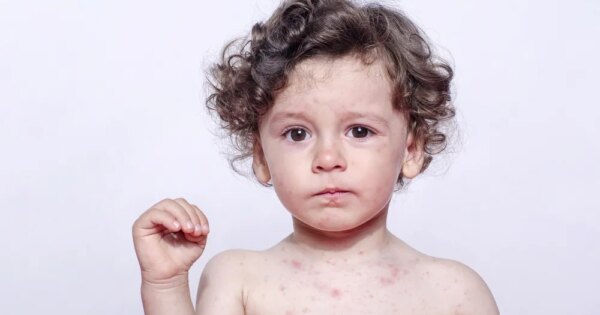Children are born with many qualities, but being polite isn’t one of them. In other words, good manners are learned, and it’s up to you to teach your child how to behave politely. The key to manners, according to Emily Post, is awareness. In other words, kids need to understand that other people have feelings too. By 18-months-old, most children are able to get the concept that their behavior can and will affect others. They need to learn that politeness is a skill that, once acquired, will be used for life, not just on specific occasions. Rude children are a turn-off to both adults and children, so teaching them to behave aids in their social development. Like most elements of parenting, teaching your child manners and politeness is a work in progress. And there are even some adults who never get there! Here are 17 things you should know about teaching your children how to behave.
17. Eye Contact
The very first thing to teach when it comes to manners is eye contact. Start by making it a game wherein you and your child hold eye contact for 5 seconds. Then try 10 seconds. For many parents, eye contact is a sign that their child is listening and/or paying attention to them. To promote eye contact, ask your kids to tell you what color someone’s eyes are when they speak to them. (Note that for some children, maintaining eye contact can be a challenge for either physiological or developmental reasons. If you feel there are issues, be sure to consult your medical professional. Never force your child to look at you.)
16. Shake Hands
Fist pumping, high fives, and “proper” handshakes are all ways of greeting someone. Show your child the webbing in between the fingers, and then teach them that when you shake hands, the web between the thumb and forefinger is meant to touch. They will feel proud and grown up when they shake hands like adults do. Some people like to avoid the germs from shaking hands and prefer a fist pump, while others are happy with a more casual high-five. It all works.
15. Table Manners – Beginner
The most common behavior issues often begin in the high chair. Teaching them from a very early age not to spit out or throw food is the best way to start. Tell your child what you expect from the earliest days. If your child is a food flinger, give them one piece at a time. When they have finished, they can have another. Try ignoring obnoxious behavior if you can, as often little ones are just looking for extra attention.
14. Table Manners – Intermediate
Remind your kids what is expected – at the dinner table and away from the house. Use gentle cues to remind them to ask for something, not reach for it. Let picky eaters know that they may not push food away, but can say “no thank you”. Chewing with their mouths closed, using utensils and sitting down in their chairs are all expected behaviors. When they are finished eating, a reminder to ask to be excused may come in handy. A child should also be encouraged to clear their own plates.
13. Table Manners – Advanced
Older children should never be allowed to bring or use electronic devices at the table. They should be encouraged to help out by setting and/or clearing the table. To encourage conversation, ask them questions that require more than a “yes” or “no” answer. A subtle hint not to start eating until everyone is served goes a long way. Napkins on laps make for a lot less laundry. If your child complains about the food and is old enough to cook, kindly suggest that perhaps they’d be happier making their own meals, provided they clean up after themselves.
12. Please and Thank You
By 18-months old, your child may be able to say the words please and thank you, but may not understand what they actually mean. Still, it’s a great habit to get into by gently reminding them to use please and thank you whenever they request or receive something. Don’t be afraid to prompt them. By the time they reach the age of three, they can link the words to the concept.
11. Sharing
At around two years old, children start to understand the concepts of sharing and taking turns. They may not necessarily like either, but these are learned behaviors that will help in their social development. Encourage sharing by giving your child two of one thing and suggesting they “share” one with their friend or sibling. Announce when it is someone’s turn, whether it’s their turn to take a bath, or their turn to choose the game, eventually they will understand (though enjoying it may take a little longer!)
10. Apologizing
At around 18 months old, children start to experience empathy. They get sad when someone they love gets sad, they relate to other creatures in books and in life. That said, they do not get the need to apologize if they hurt someone, intentionally or otherwise. Get into the habit of reminding them. Discourage hurtful behavior and explain how actions can affect someone else. They may be too caught up with themselves to apologize, but slowly the concept will sink in.
9. Art of Conversation
We always presume that our kids know how to have a conversation. That would be a mistake. Let your kids know that conversations happen when both parties ask and answer each other’s questions. To teach your kids how to converse, try turning it into a game. Start with an object, such as a ball. Whoever has the ball can ask a question. Once the other person has answered that question, they get the ball and it’s their turn to ask.
8. Not Interrupting
When children are learning to converse, it is challenging for them not to blurt out whatever is on their minds. Let them know that interrupting isn’t very nice. Remind them that they don’t like being interrupted either. Encourage them to be patient by not speaking until the other person has finished. Sometimes asking them to count to 5 in their head can help. Be sure to model this behavior by resisting the temptation to interrupt your child when they are speaking.
7. Excuse Me
Sometimes, an interruption cannot be helped. Let your child know that there are times when they may need to interrupt someone who is speaking. An emergency, or needing to use the bathroom are examples of such times. Teach your child to say “excuse me”, or show them a signal such as raising their hand. Also let them know that “excuse me” can be used to get attention, or, literally, to excuse behavior (such as burping or passing gas).
6. Play Dates
Playing with other kids in a personal environment is a great chance to practice good manners. Start by setting them up for success by scheduling the play date when your child is well-rested and fed. Remind your child about expectations: saying please and thank you, taking turns, etc. Step in with gentle reminders throughout, but be sure not to embarrass your child. Inevitably there will be tears when young children get together. Don’t take it personally or let your child get distressed over it. Most importantly, be sure to remind them thank their host or their guest for sharing their time.
5. Addressing Adults
How to address an adult is something that depends on your own comfort level. Some adults like to be addressed as “Mr/Ms/Mrs” while others are far more casual. Often an adult will introduce themselves to a child, so take your cue from there. If in doubt, you can refer to an adult as “your teacher” or “the bus driver” or even “so-and-so’s mom” and wait for the adult in question to specify what they like to be called. Always err on the side of politeness.
4. Nose Picking
Many children are compulsive nose-pickers. For some it is a means to an end, while others may find their fingers up their noses as a self-soothing mechanism. When you see your child’s finger moving towards their nose, simply hand them a tissue. If you make a big deal out of it, they may do it even more. Even of your child refuses to take the hint, or doesn’t care if they’re offending others, they will grow out of the nose picking stage once they are more socially self-aware.
3. Potty Talk/Cursing
Many kids delight in potty talk because it often makes adults laugh. Additionally, when associated with the act of using the bathroom it should be encouraged. If they are using language for shock value, try your best not to respond or acknowledge. Often they are looking for attention, even if it’s negative attention. Washing their mouths out with soap or using chili sauce etc is not acceptable behavior for an adult to engage in. The less a fuss is made, the less they will be tempted to use inappropriate language.
2. General Manners
Let your kids know if they are ever in doubt whether something is appropriate, ask. If they aren’t sure if they are allowed to do something, ask permission first. Remind them to always think first, speak second. It is not necessary for them to blurt out anything that may be on their minds. People are not interested in their negative opinions, which should be kept to themselves or kept private. Comments about other people’s physical appearances or characteristics are not welcome unless they are complimentary. If they have questions, however, always be sure to answer them either privately or in a positive manner.
1. Modeling
Your kids learn from you. So if they see you being rude, swearing, or road-raging, they will think it’s ok for them to do the same. They need to see you acting politely, consistently. It takes a lot of practice and reinforcement so make sure all caregivers are on the same page – and are all acting politely. Add those pleases and thank you’s at every meal. Don’t use your phone at the table. When you cough or sneeze, cover your mouth. Say “excuse me” when needed. Learn to listen. By encouraging and discouraging the same behaviors, your child will know what’s expected of him or her, regardless of the company they keep.




















